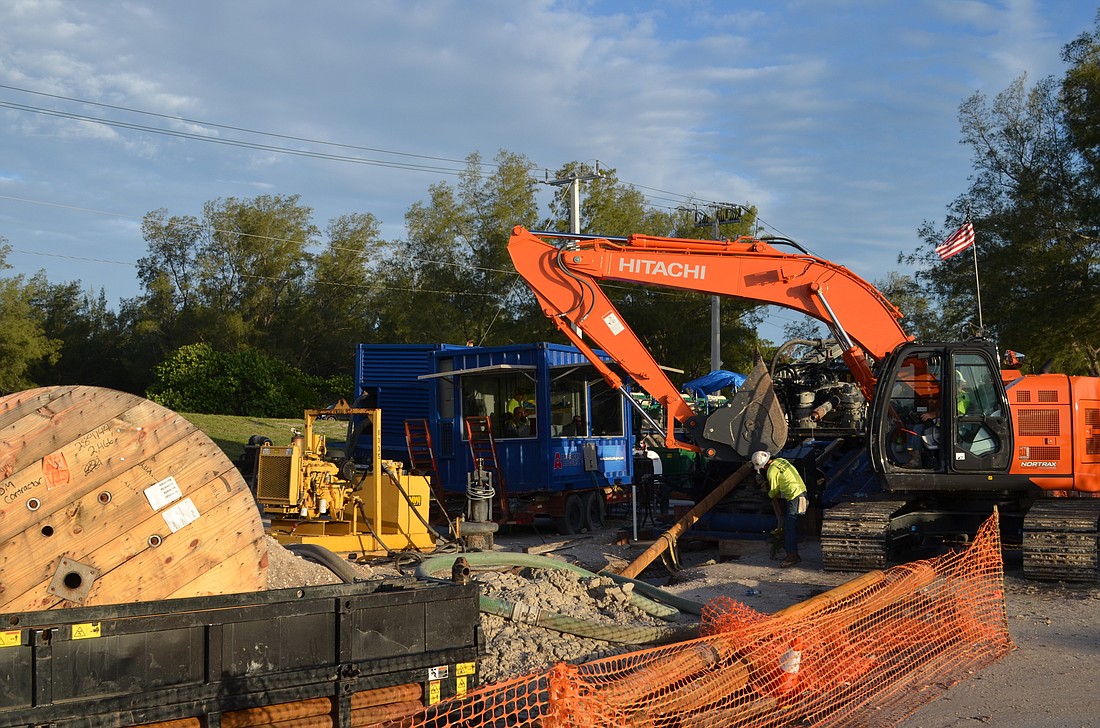- December 16, 2025
-
-
Loading

Loading

The financing plan for the project to bury Longboat Key’s overhead utilities received approval from the court last week, the town’s final legal check necessary for construction to begin later this year.
The 12th Judicial Circuit Court last week deemed the town’s bond to pay for the more than $23 million neighborhood project legally sound, a process completed in 2016 for the Gulf of Mexico Drive portion of the project.
This deemed the bonds safe from litigation, verifying to would-be financiers and contractors the project will not be stopped because of a lawsuit about money. Now it’s up to the town to find someone to finance the project and another to build it.
First comes money. The town will send letters to all residents in the neighborhoods by August informing them how much their assessment will be and giving them an option to prepay, said Susan Smith, director of finance. About 20% of those who received a similar letter for the GMD project prepaid, Smith said.
The number of prepayments determines how much the town will need to borrow — more money prepaid means the town has to borrow less. Neither the bond for the GMD project nor the neighborhoods project have been filed for bidding, Smith said.
Next comes the contractor to do the work. Similar to the financial process, the town will solicit bids from contractors, said Purchasing Manager Kari Kennedy. A committee of town staff and residents, which has yet to be assembled, will base its decision on such factors as experience and ability; personnel and resources; the firm’s location; interactions with town and regulatory agencies; timely completion of past projects; and references in the form of surveys.
The committee will pick first-, second- and third-best options (there could be more). That shortlist is then interviewed and offered to the town manager for final approval.
Public Works Project Manager James Linkogle said this process could be finished by late-summer or early-fall, when he anticipates construction will begin.
The town has planned the project in five phases, the final three of which are scheduled for simultaneous construction. The first two phases encompass the north and south ends of the islands, the latter scheduled to begin before the former.
Preliminary plans for the first phase, a coordination with Florida Power & Light Co., should be submitted to the town within a few weeks, Linkogle said. The plans for phase two, according to the town’s website about the project, are nearing final review.
Construction for the project, per town code, is scheduled for “normal day business hours,” Linkogle said. But that constraint is up for appeal if the contractor finds it would be more efficient to work longer hours, Linkogle said.
Some of the neighborhood streets may be restricted to one lane while construction crews put new wire underground, but Linkogle said he does not anticipate lane closures on Gulf of Mexico Drive, the town’s only, often-congested throughway.
No power outages are expected, Linkogle said. The only time there may be issues with power, Linkogle said, is when contractors are switching overhead power service to the underground wires.
The process could last a few hours for residents with an overhead connection to their property, but any power outages for switching power will be “closely coordinated and scheduled,” with residents, he said.
And if everything goes as planned, the project should be finished within three years of the first shovel digging into the ground. Town officials are hoping that putting all the town’s overhead utilities underground will increase power reliability, hurricane safety and island aesthetics.